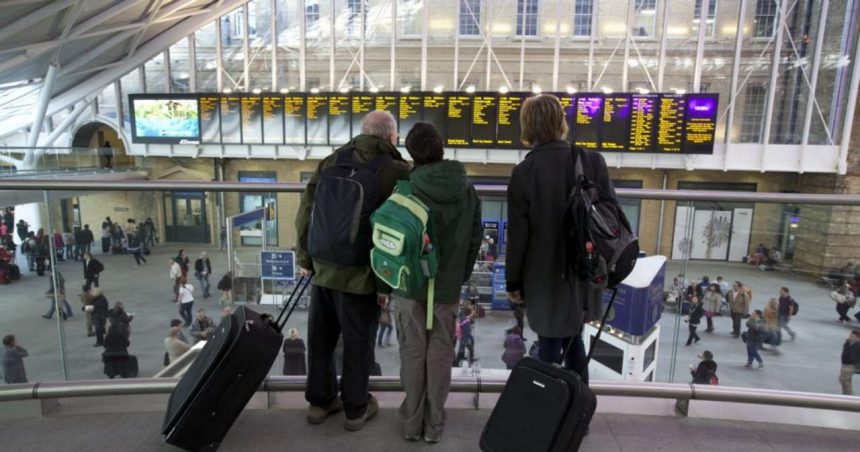Network Rail has produced a guide to help autistic people travel by train confidently and independently.
Our autism friendly guide to travelling by train was developed in partnership with the National Autistic Society.
Research was conducted with groups representing passengers with specific needs and looked into additional ways to make the railway more accessible for everyone.
Available online, the guide shows the sights that passengers may see and sound clips of sounds and noises that passengers may hear when using the railway.
It covers every stage of a journey, from purchasing tickets, getting to the right platform, and finding a seat on the train.
There are links to examples of sounds that can be heard at a busy station, and photographs of such things as common signs, departure boards, and uniformed staff to ask for help. There is also advice on how to get to a station and what to bring.
Susan Holden, Network Rail's stations customer experience manager, said: “After conversations with the National Autistic Society it became clear that we could do more to help prepare autistic people for travelling by train. Stations can be noisy and busy places, and although our staff are very well trained to provide assistance, and to recognise when people may need extra help, we also realise that some people may be put off travelling as they simply don't know what to expect.
“The idea of this guide is that it will take you through every step of a journey, with clear information, pictures and sounds, so you can familiarise yourself before you set off. We've had invaluable input from NAS, and we're confident it should really help anyone who's anxious or unsure about train travel.
“More and more people are returning to the railway as we emerge from the pandemic and we hope this guide is an extra step to helping all our passengers feel safe and comfortable.”
Lisa Myers, Head of Operations, Training, Consultancy and Conferences at the National Autistic Society, said: “We are really pleased to support Network Rail to develop this new autism friendly guide.
“Around one in 100 people are autistic and need to travel, like everyone else – whether that's to school, to meet friends or to the shops. But crowds, loud announcements and sudden diversions can be really overwhelming, to the point that some autistic people find it hard to contemplate leaving the house at all.
“This guide could really help autistic passengers, by giving them the opportunity to prepare and know what to expect. But it's also crucial that staff understand autism and how to support autistic passengers through autism-specific training. We're pleased Network Rail has developed this guide and call on train providers to follow their lead to we can work towards making our railways more autism-friendly.”
Rail Minister, Chris Heaton-Harris, said: “Our railways are not just a cornerstone of transport across the UK but part of our history and culture and it's important that everyone feels able and confident when navigating them.
“This initiative is another huge step in the right direction to making our railways more user-friendly and will support the work in our upcoming National Accessibility Strategy – the first-ever robust, joined-up, system-wide approach to accessibility – set out in our Williams Shapps plan for rail.”
Our autism-friendly guide to travelling by train is available on the Network Rail website at https://www.networkrail.co.uk/wp-content/uploads/2021/09/Autism-friendly-guide-to-travelling-by-train.pdf.
Where Next on RailAdvent?
Railway News
DVDs, Prints, Cards and Gifts
MAINLINE STEAM INFO
Competition Time!
Share your pictures
FREE NEWSLETTERS
Subscribe for More

That is a great idea for young people who have Asperger’s Syndrome and Autism Spectrum Disorder. I have Autism and I have no problem with travelling on trains when it’s busy and I am used to lots of noise including background noise.
But yes there are other people out there with Autism or have the condition who do not like background noise or railway stations being overcrowded which can be challenging.